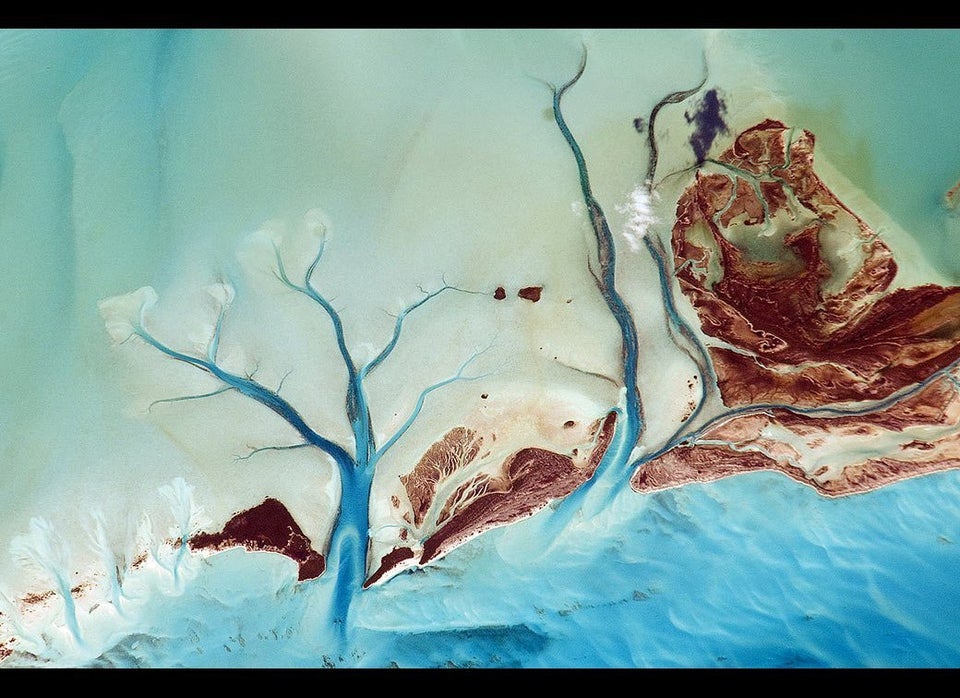Born, raised, and still a proud resident of Baltimore, Maryland, Academy Award-winning filmmaker Barry Levinson (Diner, Rain Man, Good Morning, Vietnam) has used his native home as a backdrop to many of his films—but never quite like this.
His new film, The Bay, documents a Fourth of July on the tranquil shores of the Chesapeake Bay. The seemingly benign holiday quickly takes a terrifying turn when mutating isopods begin to eat swimmers and water drinkers from the inside out.
Where exactly did the fast-growing parasites come from? The combination of agricultural pesticides, random pollutants, and steroids-in-chicken-manure that have been dumped into the bay, which have (in fact) rendered the Chesapeake 40 percent dead.
“Eighty five percent of the story is based on facts,” says Levinson, in an exclusive interview with TakePart. “In most cases we aren’t making this stuff up.”
The Bay opens on November 2.
Read on for Levinson’s thoughts on the Chesapeake Bay’s future, particularly why urgent action must be taken to save a national treasure.
TakePart: You are not known for horror films. Where did the idea come from?
Barry Levinson: I didn’t start out to make an eco-horror film. I was asked initially to make a documentary about the Chesapeake Bay and the fact that it’s 40 percent dead. I did a little research and found that Frontline had done a terrific documentary about the Chesapeake and all of its problems, yet I didn’t hear a lot of people really up in arms about the dangers. They made a great documentary and nobody paid attention. I thought, ‘How can I do it better?’ and thought, ‘I probably can’t.’
But I started to think about the scary facts and about my skills as a storyteller, and that’s how the idea evolved. I would have never sat down to write a so-called eco-horror movie.
TakePart: It’s probably fair to say that the Maryland Tourism Board is not going to be promoting the film, given that your mutating parasites essentially kill off a small community on a sunny holiday weekend.
Barry Levinson: What is the option, to not talk about the fact that the Chesapeake is 40 percent dead, to put it under the rug, let it continue to decline? A lot of this stuff has been hidden for a long time and at some point you have to say we’re going to deal with this, not ignore it. It won’t just go away.
There is nothing that’s going on the Chesapeake Bay that can’t be corrected. It’s not an unknown disease, we know all of the contributing factors, so how do we aggressively try and fix it?
It’s 40 percent dead now. We don’t want it to become 55 or 60 percent dead because then the economics will turn against you. The chicken industry of course says that cleaning it up will cost jobs, but even with that we still have time to find answers.
As a filmmaker, I have the obligation to entertain an audience. But I can also pose questions. The facts are what make this movie more captivating at a certain level.
TakePart: In real life similar isopods have grown to two-and-a-half feet long and tried to chew through a submarine, thinking it was a whale carcass.
Barry Levinson: That’s the thing, 85 percent of the stuff in the film is factual. That isopods have moved from the Pacific to the Atlantic is true, though they haven’t moved into the Chesapeake...yet. That we are throwing the whole male/female relationship in the marine world out of whack by polluting it, is true. The water filtration system in this country is broken, that is true. There are all kinds of things happening in the bay due to chemicals dumped into it so that we are playing with a toxic soup.
TakePart: Are you concerned that the chicken growers of America and other industries along the Chesapeake might come after you for painting an ugly picture of what happens to all that steroid-laced chicken manure and other toxins?
Barry Levinson: Another truth is that most things in this country are controlled by big money interests. They play high stakes and have deep pockets so they can move and change public opinion quickly. It’s not like we’re playing on an even playing field; large corporations in this country easily set the agenda.
But I don’t think they’ll come after us on this one. It’s not a documentary. The Bay is not unlike films from the 1950s, where monsters were created out of nuclear leaks. We fall into that kind of category horror film.
TakePart: What inspired you to construct most of the film using ‘found footage’?
Barry Levinson: We used 21 different digital/consumer cameras, from iPhones to low-end consumer video cameras. I just thought of the movie as a piece of the world we live in today. If something catastrophic happens today, for the first time in history we have far more personal documentation than just a news camera that might have been there at the right time. The tsunami in Japan was the first time that happened, then the protests in Egypt.
Future history will be told by piecing together emails, text messages, Facebook posts, Skype conversations, still photographs and smartphone videos, which will truly create the story of how we lived our lives and communicated with each other.
